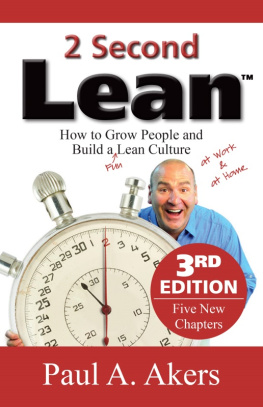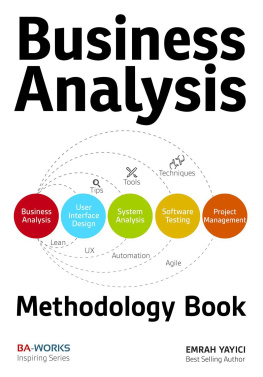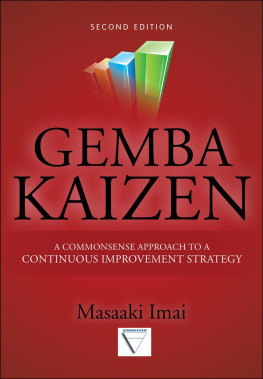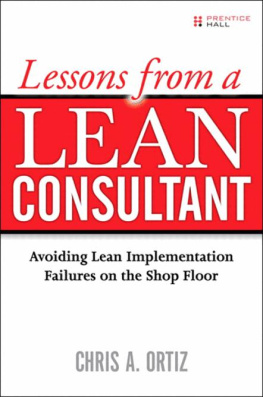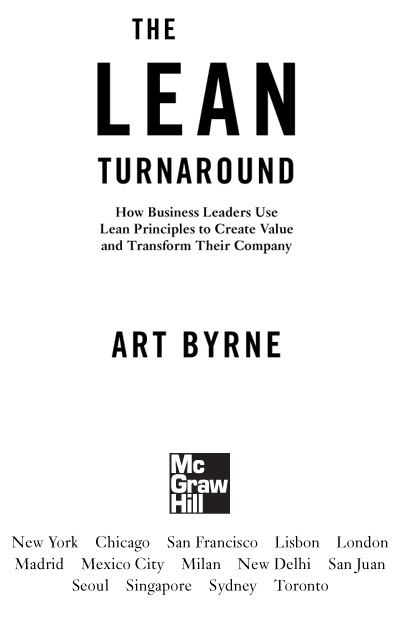Art Byrne - The Lean Turnaround: How Business Leaders Use Lean Principles to Create Value and Transform Their Company
Here you can read online Art Byrne - The Lean Turnaround: How Business Leaders Use Lean Principles to Create Value and Transform Their Company full text of the book (entire story) in english for free. Download pdf and epub, get meaning, cover and reviews about this ebook. year: 2012, publisher: McGraw Hill LLC, genre: Business. Description of the work, (preface) as well as reviews are available. Best literature library LitArk.com created for fans of good reading and offers a wide selection of genres:
Romance novel
Science fiction
Adventure
Detective
Science
History
Home and family
Prose
Art
Politics
Computer
Non-fiction
Religion
Business
Children
Humor
Choose a favorite category and find really read worthwhile books. Enjoy immersion in the world of imagination, feel the emotions of the characters or learn something new for yourself, make an fascinating discovery.

- Book:The Lean Turnaround: How Business Leaders Use Lean Principles to Create Value and Transform Their Company
- Author:
- Publisher:McGraw Hill LLC
- Genre:
- Year:2012
- Rating:3 / 5
- Favourites:Add to favourites
- Your mark:
The Lean Turnaround: How Business Leaders Use Lean Principles to Create Value and Transform Their Company: summary, description and annotation
We offer to read an annotation, description, summary or preface (depends on what the author of the book "The Lean Turnaround: How Business Leaders Use Lean Principles to Create Value and Transform Their Company" wrote himself). If you haven't found the necessary information about the book — write in the comments, we will try to find it.
With 30 years of accumulated experience, Art Byrne is one of the rare few people who can speak with authority about the pitfalls of fi nancial measurement systems, the importance of respect for people, the power of Lean in the marketplace, and the leverage from organizing people around value streams. When he writes Go to the Gemba and Run Your Kaizen, we must take heed. MASAAKI IMAI, bestselling author of Kaizen and Gemba Kaizen
In this wonderful and important book, Byrne shows us that Lean management, understood and practiced correctly, consistently delivers spectacular results. BOB EMILIANI, author, Better Thinking, Better Results, and Professor, Connecticut State University
A compelling picture of how Lean techniques and attitudes enable CEOs and senior executives to create a culture for transforming a company and putting it on a highperformance path. JERRY J. JASINOWSKI, former President of the National Association of Manufacturers
Art Byrne provides real-world examples of how he exhibited the wisdom and courage to do the right thing, improving work practices at all levels of the organization to deliver the right results for all stakeholders. Which comes first, the wisdom or the courage? Read The Lean Turnaround to find out. JOHN SHOOK, Chairman and CEO, Lean Enterprise Institute
Lean is the closest thing to magic I have experienced in my 40 years in business. I recommend Lean and this book to everyone responsible for the performance of a business, particularly those in private equity like me, where leverage magnifies the importance of cash. JOHN CHILDS, founder and CEO, of J. W. Childs Associates L.P.
A must-read for any leader interested in understanding the strategic advantages from focusing on activities that add value to the customer experience. GARY S. KAPLAN, MD, Chairman and CEO of the Virginia Mason Health System
Lean isnt just for manufacturing anymore . . .Few business leaders in the world have applied Lean strategy as successfully as Art Byrne hasand none has the ability to explain how to do it with such succinctness and clarity.
Famous for turning around the wire management company Wiremold, where he rethought every aspect of operations from the customers standpointand got everyone else in the company to do likewiseByrne has successfully implemented Lean strategies in more than 30 companies in 14 different countries.
In The Lean Turnaround, this legendary business leader shares everything he has learned during his remarkable career and shows how anyone can achieve similar results. His primary message is this: Lean strategy isnt just for manufacturing. In fact, Byrne is using this very approach in his present position at a private equity firm.
Whatever type of company you run, Lean can be used to improve virtually every aspect of operations, from training and leading employees to accounting and payroll issues. The Lean Turnaround explains all the ins and outs of applying Lean strategy to:
Instead of attempting to get customers to conform to your way of doing thingswhich is, sadly, what most managers are taught to doyou need to configure your company to be responsive to the customers. This is at the core...
Art Byrne: author's other books
Who wrote The Lean Turnaround: How Business Leaders Use Lean Principles to Create Value and Transform Their Company? Find out the surname, the name of the author of the book and a list of all author's works by series.

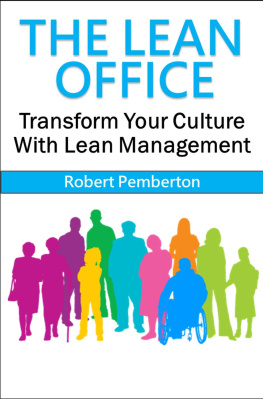
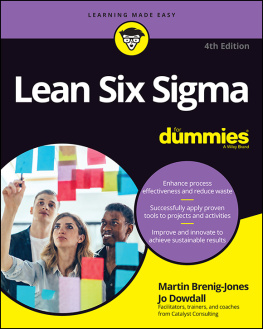
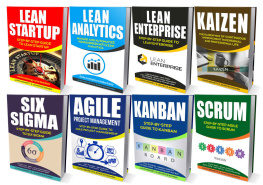
![Masaaki Imai - Strategic Kaizen(tm) Using Flow, Synchronization, and Leveling [Fsl(tm)] Assessment to Measure and Strengthen Operational Performance](/uploads/posts/book/267064/thumbs/masaaki-imai-strategic-kaizen-tm-using-flow.jpg)
